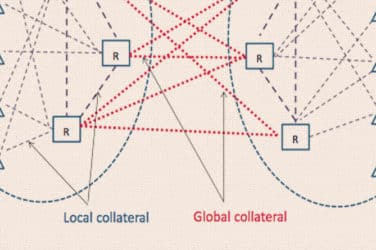
Portuguese and Belgian central securities depositories have gone live on Target2-Securities, completing the second phase of the project to harmonize securities settlement in Europe.
Interbolsa, a subsidiary of Euronext Lisbon, and National Bank of Belgium Securities Settlement System started operating on T2S on 29 March 2016.
The European Central Bank launched the T2S project in 2008 to end fragmentation in securities settlement across the Eurozone by providing a single IT platform to settle transactions in central bank money across borders, central securities depositories and currencies. A single set of rules and standards apply to all transactions in Europe through T2S which reduces the complexity of the market structure and aims to make European markets more efficient and attractive to investors.
Rui Matos, interim chief executive of Interbolsa, said in a statement: “We are confident that this successful migration to T2S will bring unmatched benefits for all Interbolsa clients, in terms of harmonization of processes and future solutions – efficient and secure – provided to the Portuguese market.”
The Belgian CSD said in a statement: “From now on, both national and international securities transactions will be settled on the common European platform, where all securities and cash accounts, along with their transactions, will be managed and settled centrally.”
Migration to T2S also standardizes communication messages and modes of connection, and provides harmonization and economies of scale for banks and stockbrokers active in several different countries and on several markets.
All participating CSDs pay the same price to use the platform so there is no difference between domestic and cross-border transactions. T2S allows auto-collateralization where the European Central Bank can anticipate funds needed for settlement and allow netting between national central bank balances e.g a long position in Italy and a short position in another country.
Brokers, asset managers and banks could save between €30m and €70m annually if they take timely action to consolidate assets across major T2S markets according to a 2014 study commissioned by Clearstream, Deutsche Börse’s CSD, and conducted by consultancy Oliver Wyman.
The first four CSDs – from Greece, Malta, Romania and Switzerland – went live on T2S on 22 June 2015. Italy was also due to join that month but the ECB agreed to a formal request by CSD Monte Titoli to reschedule the Italian community’s migration to 31 August 2015.
Last October the Euroclear group also informed the ECB that it had some issues in its internal preparations for migrating to T2S so that Euroclear Belgium, Euroclear France and Euroclear Nederland, which were scheduled to join this month, would require more time. As a result the CSD Steering Group and the T2S Board agreed on a new migration plan to avoid further delays for any CSDs and reduce the impact of such delays on other CSDs. A new final wave was introduced for 18 September 2017, seven months later than initially planned.
The “T2S in 2015” report said: “The first few months of operations have been a success and the platform is stable, but most of all – we are now one step closer to achieving deeper financial market integration in Europe.”
With the start of T2S operations last year some national central banks (Greece, Romania, Malta, Luxembourg, France, Germany and the Netherlands) also started providing dedicated cash accounts to the participants in the first migration wave.
The report said: “T2S users quickly got familiar with the new system and its functionalities as they started using advanced features such as auto-collateralization and advanced tools for managing/optimising the use of securities and cash in T2S.”
The volume of settled transactions on T2S increased significantly following the migration of the Italian CSD to the platform last August. Between September and December 2015 T2S settled an average of 1.87 million securities transactions per month with 76% settled overnight and 24% in real-time.
The report said that last year the platform experienced 19 incidents which required the involvement of the T2S settlement and crisis managers and the majority were software-related. “Considering the magnitude and complexity of T2S, this number can be considered normal as there was a need to further stabilise and improve the functioning of the newly launched platform,” added the review. “The problems have been addressed through the deployment of new software releases and hotfixes.”
Last October Yves Mersch, the ECB’s Executive Board Member, announced the three main pillars of the Eurosystem’s vision for the future of Europe’s financial market infrastructure. One pillar was possible synergies between T2S and Target2, the Eurosystem’s real-time gross settlement system.
“The ultimate goal is to consolidate the technical infrastructures so that Target2 can benefit from state-of-the-art features currently available in T2S,” said the report.
Featured image by juanjo tugores/Adobe Stock





